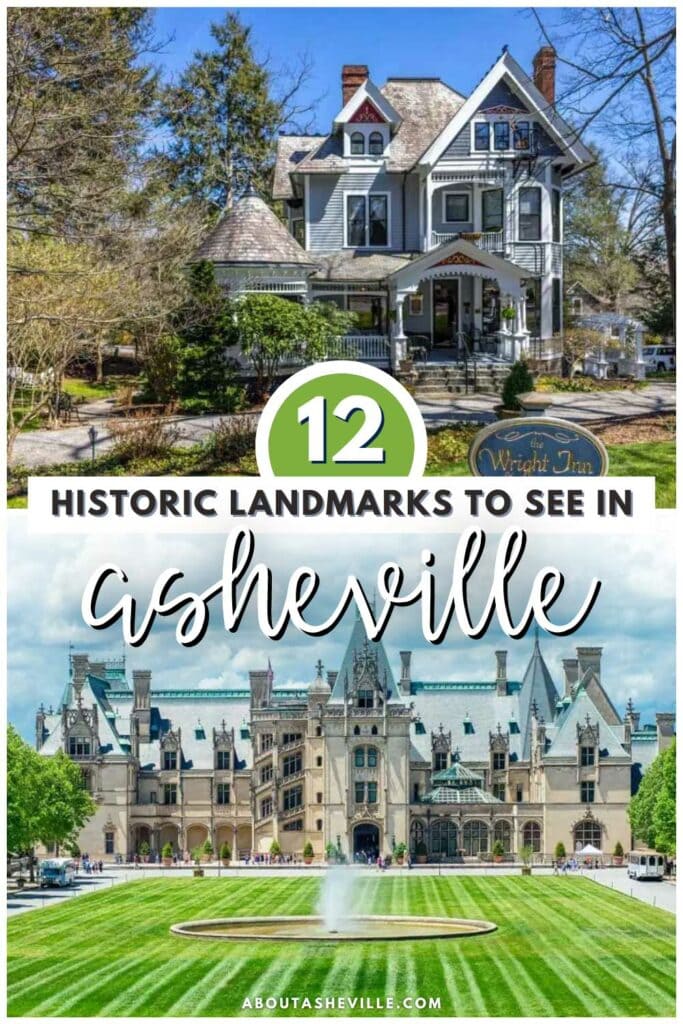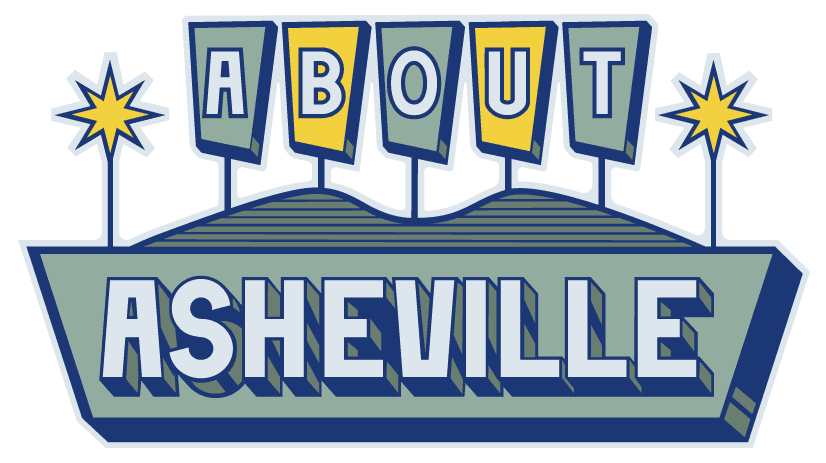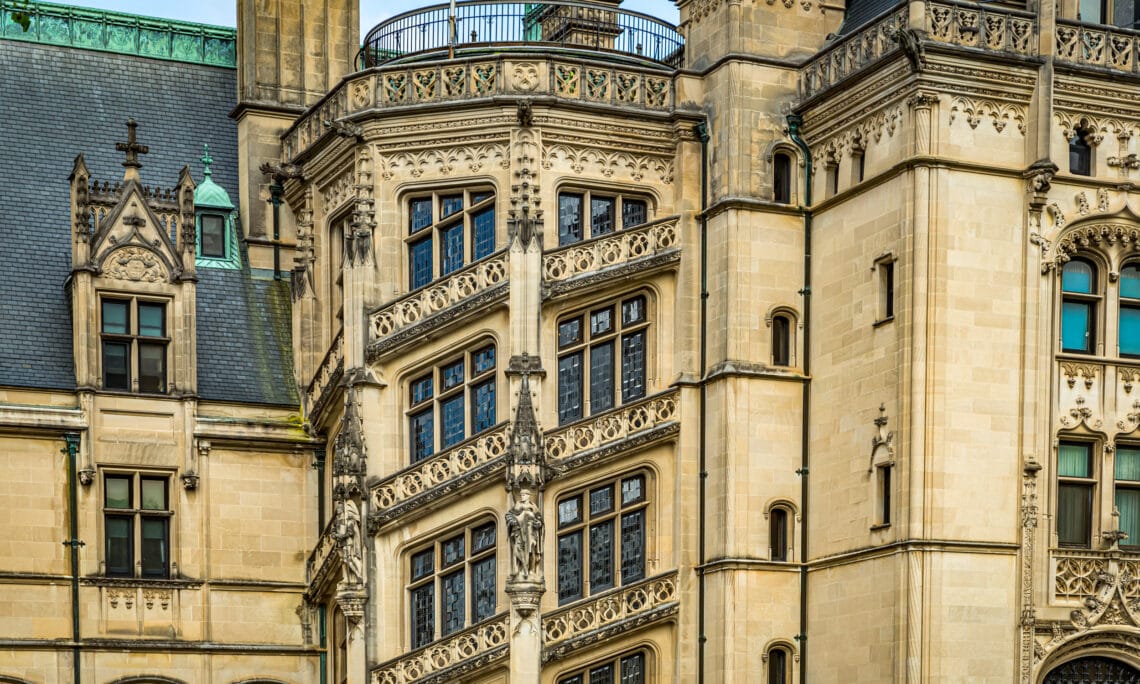
12 Can’t-Miss Historic Landmarks in Asheville
There are so many ways to experience Asheville! We have a fabulous farm-to-table food scene, the great outdoors, and an amazing health and arts-oriented culture. Also, Asheville has more breweries per capita than any other city in the United States (an average of 28.1 breweries per 100,000 residents and 100 local beers).
You can come to Asheville and experience all of that or try different things on different visits. But Asheville also has a rich history.
Settled in the Blue Ridge Mountains, in the land of the Cherokee Nation, Buncombe County was established in 1792 with a city called Morristown. It changed its name to Asheville in 1797, after North Carolina Governor Samuel Ashe.
After the Civil War (the area remained relatively untouched by battles), and with the arrival of the Western North Carolina Railroad in 1880, Asheville became a famous health retreat and summer resort town for the most privileged. Today, an estimated 11 million travelers come here yearly for the same reasons they did then (and a million more!).
The city was flourishing in the glorious 1920s, but when the stock market crashed, so did Asheville. Asheville finished paying its debt in 1974. So, in the following years after the Depression, the city didn’t change much. There wasn’t any money to invest, which was a good thing because it helped preserve the historic landmarks and architectural styles.
Downtown Asheville became quiet (and even gloomy) for a couple of decades until a group of pioneer entrepreneurs decided to revitalize it. And their mission was a resounding success!
Asheville is now hailed as “Beer City, USA,” the “Best Dog-Friendly City,” the “Best Place to Move To,” the “Friendliest Town in the US,” the “Best Destination for Foodies,” to name a few. There’s a reason so many visitors come here year after year!
Thanks to its rich history, Asheville is a fantastic place to live and visit. To learn more about what made Asheville the destination it is today, you can visit these historic Asheville landmarks and sites to gain more insight.
Don’t forget to check out our web story: 12 Can’t-Miss Historic Landmarks in Asheville
Disclaimer: This post may contain affiliate links. If you make a purchase or booking through one of our links we may earn a small commission (don’t worry, it’s at no extra cost to you).
12 Can’t-Miss Historic Asheville Landmarks
1. Learn About Downtown Asheville’s Recent History With a Stroll on North Lexington Avenue
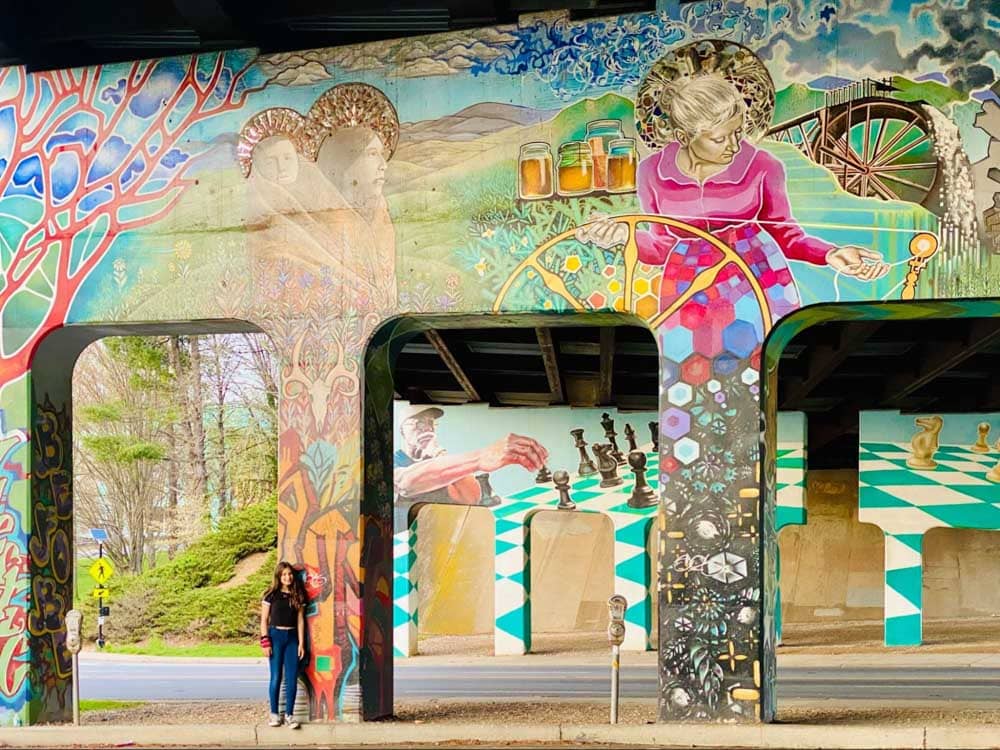
Lexington Avenue is fun, eclectic, and one of the most famous downtown Asheville landmarks. It was named one of the country’s five best streets by the American Planning Association in 2015!
The reasons? It’s a symbol of downtown Asheville’s revitalization that started in the ’80s when citizens voted out a project to demolish the buildings on Lexington Ave to build a new enclosed mall (I can’t even imagine…).
Did you know that the City of Asheville nearly went bankrupt during the Depression? After that, lots of beautiful historic buildings in downtown were left empty. Then, in the ‘60s and ‘70s, the center of our town was practically abandoned.
So, saved by the community and slowly tended to by creative local entrepreneurs, Lexington Ave is now a flourishing business district with about 200 funky local shops and top-notch places to eat and drink.
When you need a break from all the window-shopping (or a whole shopping spree!), head to Izzy’s Coffee Den or Dobra Tea and enjoy a pick-me-up beverage, or have a laid-back plant-based lunch at the beloved Rosetta’s Kitchen and learn more stories of Lexington Ave. Rosetta’s offers “pay it forward meals” and sliding scale meals. Don’t miss the local kombucha Buchi Bar!
Also, Lexington Avenue hosts the Downtown After Five festival every third Friday from June to September. Finally, take a look at the Lexington Avenue Mural!
2. Marvel at the Art Deco S&W Food Market While Enjoying Delicious Food and Beer
Listed on the National Register of Historic Places, the S&W Cafeteria building is an Asheville landmark designed by architect Douglas Ellington. Ellington is “the architect who changed Asheville into an Art Deco showplace” in the 1920s by bringing his urban, colorful style from Paris to an Arts & Crafts town like Asheville, contributing to its eclectic vibe.
The cafeteria chain opened in 1929, and, thanks to the help of Ellington’s nephews, the renovated building came back to life in 2021 as the S&W Food Market – downtown Asheville’s only food court, offering local, fast, wholesome food.
The market brought the iconic Highland Brewing Company – Asheville’s original craft brewery – to its first home in downtown Asheville. There are food options for everyone, from great Southern fried chicken at Buxton Chicken Palace and grass-fed hot dogs at Farm Dogs to the famous homemade ice cream at The Hop and Peruvian fusion food at Mikasa Criolla.
Do you want to see more of Douglas Ellington’s Art Deco buildings in Asheville? He also designed the City Building, Asheville High School, and the First Baptist Church.
The Duke Ellington’s House is another one of the top historic sites in Asheville, built entirely by hand using architectural remnants of the architect’s other projects without a blueprint. Unfortunately, the building is only available for private events.
Location: 56 Patton Ave., Asheville
3. Get a History Lesson on Asheville’s Urban Trail

The Urban Trail is a free, two-hour self-guided audio tour that follows 30 bronze sculptures and plaques around downtown. This is a great way to explore the historic sites in Asheville at your own pace and stop whenever you want to shop around, grab a snack, or relax at an urban park.
You’ll learn about Asheville’s history and some of the people who made the city what it is today, like Edwin Grove, Isaac Dickson, George Vanderbilt, and Rafael Guastavino, the architect of the Saint Lawrence Basilica.
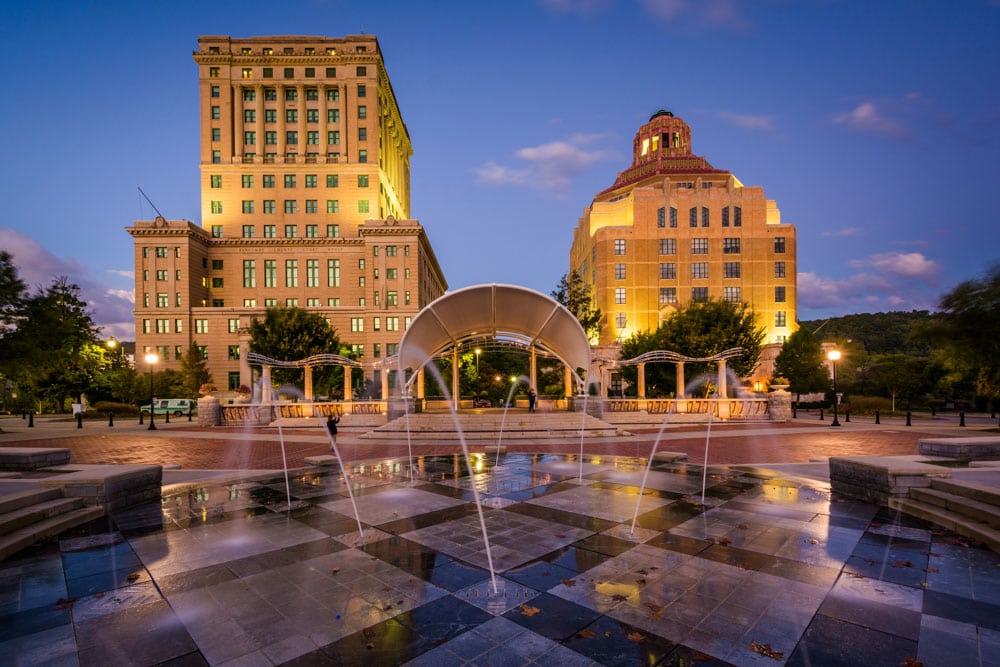
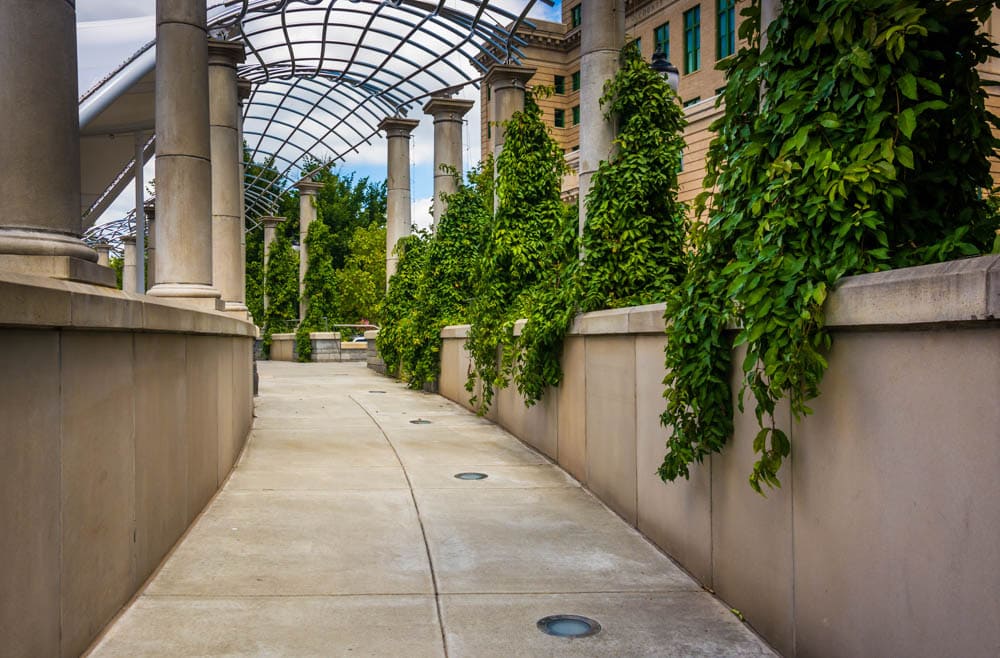
The first station is at Pack Square, another famous Asheville landmark. Because history is not only what happened hundreds of years ago but a process that unfolds every day in front of our eyes, the confederate Vance Monument that used to be the centerpiece of Pack Square was removed in 2021 as a result of the massive racial justice protests after the murder of George Floyd. It’s exciting to see what’ll come next to that space!
Some of the highlights of the Urban Trail are the gigantic iron on Wall Street (Station 8) and the Appalachian Stage outside Harrah’s Cherokee Center (Station 13), featuring five adorable bronze figures playing music and dancing. You’ll love the bench with a bower of medicinal herbs honoring Elizabeth Blackwell, the first woman M.D. in the US (Station 6). Also, Station 7 is the S&W Food Market!
Of course, you can always take a tour (and there are plenty!) to explore Asheville’s historic sites.
4. Get to Know Asheville’s Black History at The Block

Just a couple of blocks from Pack Square is The Block, a Black history landmark in North Carolina that was once the cultural and business center of Black people in this area.
To learn more about the area, you can visit the YMI Cultural Center, which was created by businessman Isaac Dickson and educator Dr. Edward Stephens as a place for Black people to get together. While you’re there, grab some excellent coffee at the on-site PennyCup Coffee Co.
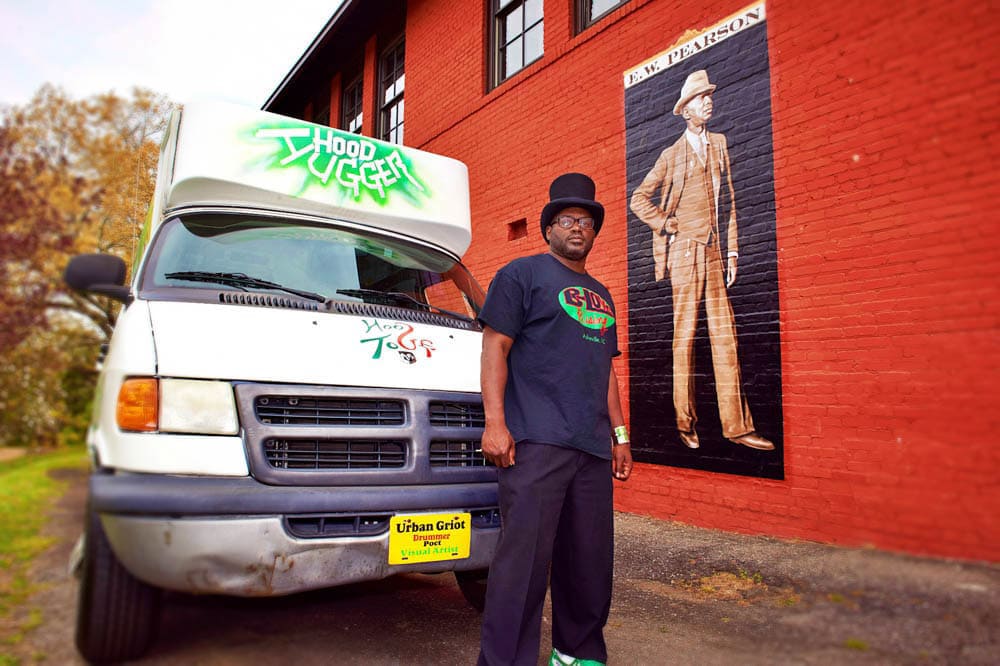
If you happen to be in town in September, the annual Goombay festival is organized by the YMI Cultural Center. This weekend-long event is held every year at Pack Square and celebrates Black culture in all its expressions.
After you’ve visited the YMI Cultural Center, head over to nearby Triangle Park, where you’ll find a mural that honors the history of African-Americans in Asheville. There are cool stores in this section of downtown, too, like the Noir Collective boutique and art gallery and the Jawbreaking fashion store.
To learn more, you can also take the fantastic Hood Huggers walking or driving tour. This initiative won TripAdvisor’s 2022 Travelers’ Choice Award. In addition, a portion of all proceeds through Hood Huggers International is reinvested in the community.
5. Follow Thomas Wolfe’s Life in Asheville and Rediscover His Prose
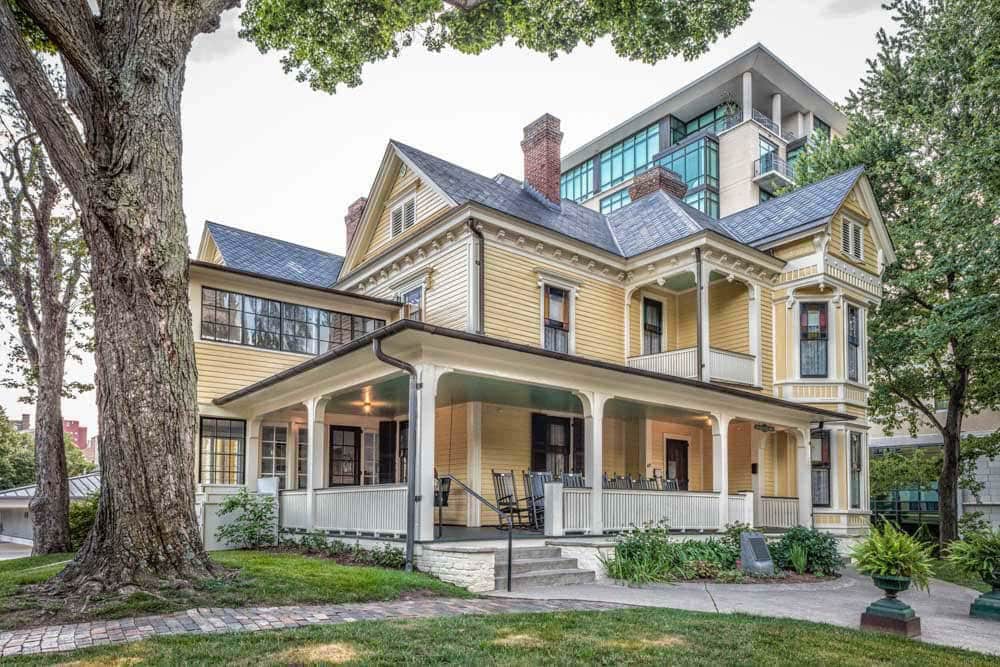
The house where the Thomas Wolfe Memorial sits was the childhood home of one of the greatest American writers and an Asheville native. The two-story, wide-porched Queen-Anne-style home used to be The Old Kentucky Boarding House, which was helmed by Wolfe’s mother.
You can take a very interesting 50-minute guided tour. Also, my kids and I took a Haunted Asheville ghost tour and learned about a ghostly presence in this Asheville landmark!
If you are a big Wolfe fan, you should definitely read Look Homeward, Angel again before you visit Asheville because this is the book in which Wolfe immortalized his childhood here.
Fun fact: some Ashevillians recognized themselves in the characters and didn’t like how they were portrayed, so the book was banned from the Asheville library for years.
Stations 18 and 19 of the Urban Trail described above are dedicated to Thomas Wolfe, including a pair of bronze shoes his size! A replica of the angel from Wolfe’s father’s monument shop (the angel in Look Homeward, Angel) is in front of the Asheville Art Museum.
You can also visit the Asheville historical landmark Wolfe Cabin, where Wolfe spent the summer of 1937 revising The Party at Jack’s during his final visit to Asheville.
The novelist is buried in the Riverside Cemetery in Montford, and his gravestone quotes his own words: “The last voyage. The longest. The best.” Do you want to learn more? Then, book an Asheville literary tour!
Location: 52 N Market Street, Asheville
6. Follow This Trail to Explore the 1920s Architectural Jewels in Downtown Asheville
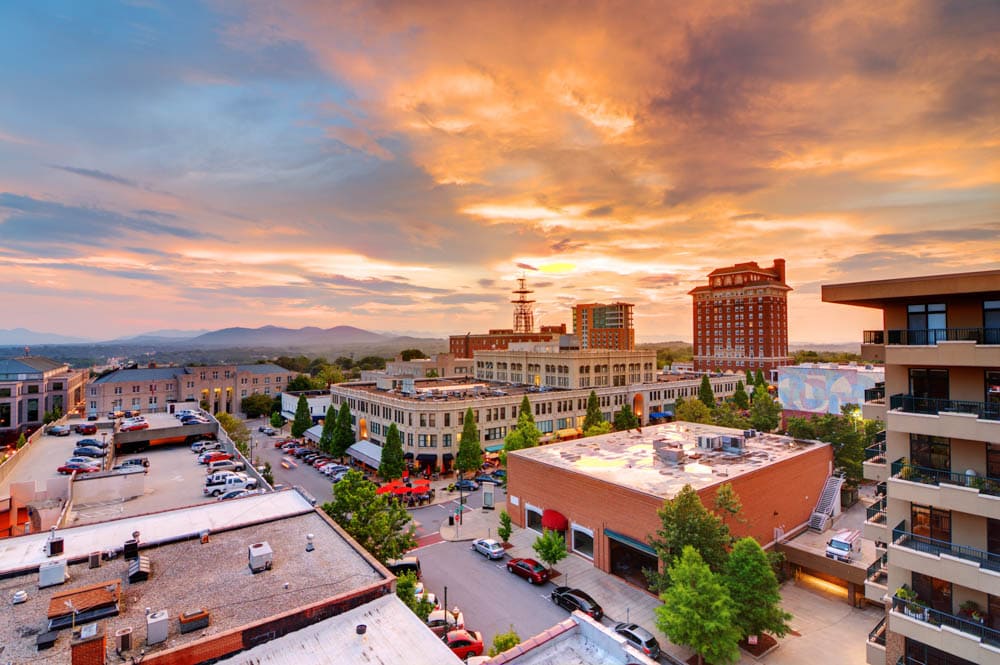
The City of Asheville’s Architecture Trail follows 14 buildings from the splendorous 1920s. I’m listing only a few of them, but please take the time to visit all of them. They’ll give you a deeper understanding of historic Asheville. Plus: you’ll pass by many fun shops and exciting places to grab a bite or a drink!
The Grove Arcade is one of the most known downtown Asheville landmarks, also known as Asheville’s Original Mall. E.W. Grove built it in 1929, and it went on to become the center of commerce in Western North Carolina until it closed during WWII. It reopened in 2002 and now hosts unique shops and restaurants.
The Neo-Gothic Jackson Building was the tallest skyscraper when it finished in 1924. It has 13 stories on a 27 x 60-foot lot. According to an urban legend, two famous ghosts live in and around this building. Look to the top, and you might see one of them!
Douglas Ellington’s Asheville City Building is an Art Deco masterpiece and an Asheville architectural landmark. The creator took inspiration from the landscapes and textures of the mountains, choosing materials “paralleling the natural clay-pink shades” of Asheville’s soil.
What do the Cathedral of Santa aria Del Fiore in Florence and First Baptist Church in Asheville have in common? Douglas Ellington, the architect of the second one, got inspiration from Il Duomo di Firenze! The First Baptist Church is listed on the National Register of Historic Places.
7. Learn More About the History of Asheville at These Two Cemeteries
The two-acre South Asheville Cemetery began as a slave burial ground, and it’s the oldest public African American cemetery in North Carolina. The first known caretaker was an enslaved person named George Avery (1844-1938), who didn’t keep records of the burials. Avery’s is one of the 93 headstones with names or dates, but it’s estimated that 2,000 unidentified African Americans are buried here.
The South Asheville Cemetery closed in 1943. Over the last 30 years, thousands of volunteers have worked with the South Asheville Cemetery Association members to bring awareness of African American history in Buncombe County and honor the people buried there.
The Riverside Cemetery is in the Montford Historic District. The cemetery is still active, and some of the famous people buried here include writers Thomas Wolfe, O. Henry, and Zebulon Vance, a controversial former governor and slave owner.
The cemetery has over 87 acres of landscaped grounds, with many beautiful, ancient trees. It’s a calm place, and locals run and walk its trails. It’s a great place to wander around, or you can take a self-guided tour.
8. Marvel at the Basilica of Saint Lawrence
The Roman Catholic Basilica of Saint Lawrence boasts North America’s largest self-supporting elliptical dome. It was built by Raphael Guastavino – a Spanish architect from Barcelona who came to Asheville to work on the Biltmore House in the late 1800s – and Richard Sharpe Smith.
The basilica was built between 1905 and 1909, and it’s an architectural wonder. There are no beams of wood or steel in the entire structure. Instead, all walls, floors, ceilings, and pillars are constructed of tile and other masonry materials.
The style is Spanish Renaissance, and some of the most beautiful features are the stained glass windows (best viewed from the center aisle, immediately in front of the sanctuary, facing the rear of the church) and the cozy Chapel of Our Lady.
They offer a self-guided tour. You’ll love the colorful, blooming rose bushes by the main entrance! If you are Catholic, don’t miss the Christmas Mass activities, including caroling and a Midnight Mass.
The basilica is a few blocks from the Grove Arcade. If you visit in the spring, take some time to visit the lovely Elder and Sage Community Garden across the street and hang out with local elders who live in the Battery Park and Vanderbilt buildings (two other Asheville landmarks!).
9. Stay at a B&B that’s also a Historic Asheville Landmark
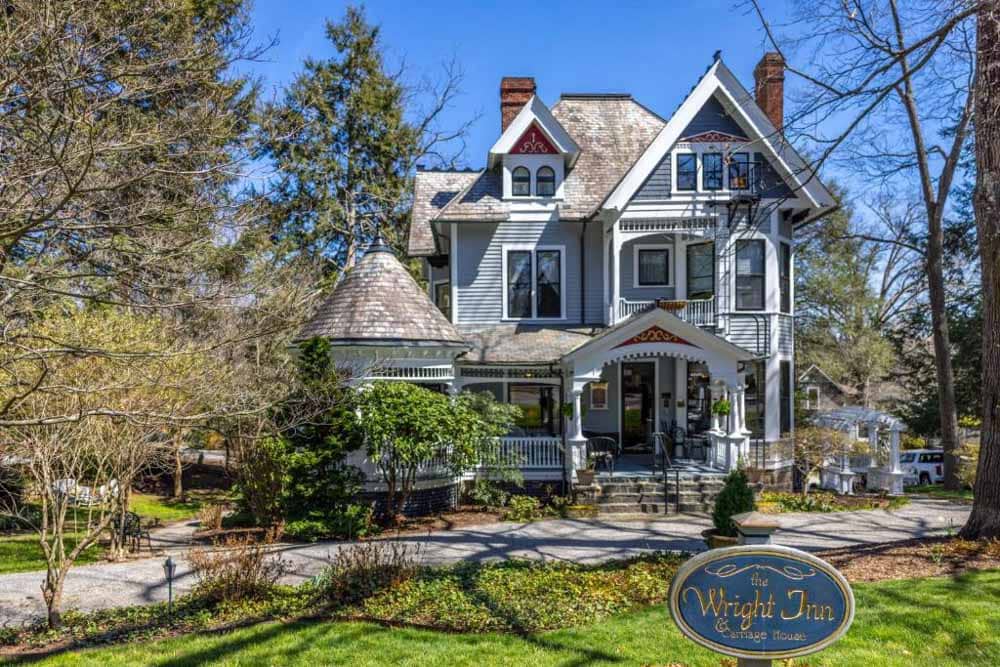
When it comes to accommodations, Asheville has a lot to offer, from boutique hotels and funky Airbnb options to budget hotels and glamping sites. Among these offers are bed and breakfasts listed on the National Register of Historic Places as Asheville landmarks!
The Wright Inn Carriage House is a beautiful bed and breakfast in the historic district of Montford, within walking distance to downtown. Built in 1899, it is a restored Queen Anne Victorian mansion and a stop for many Asheville tours, like the award-winning Gray Line hop-on, hop-off trolley.
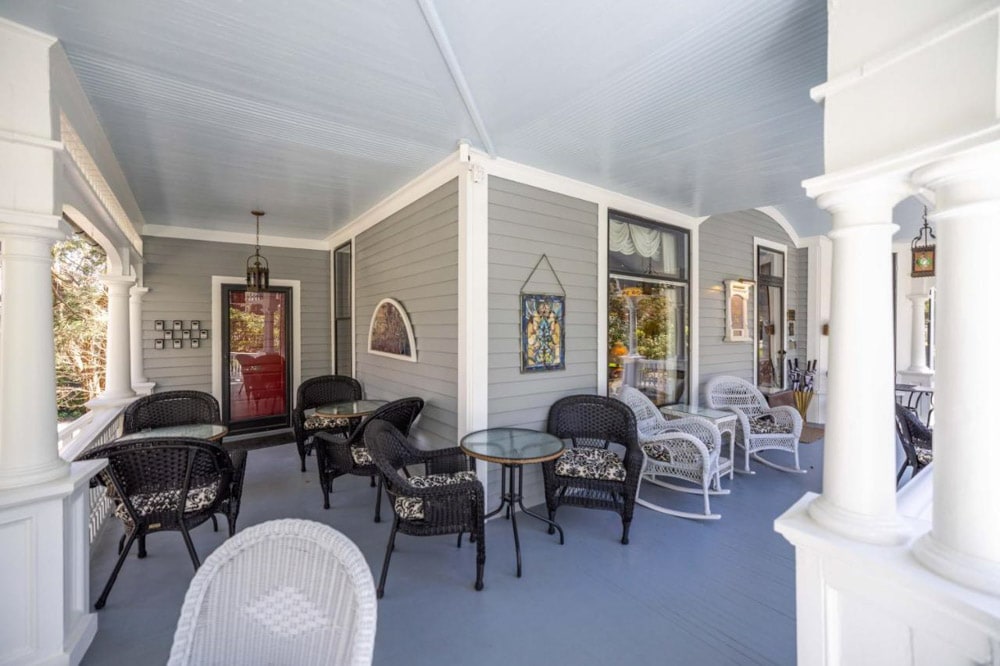
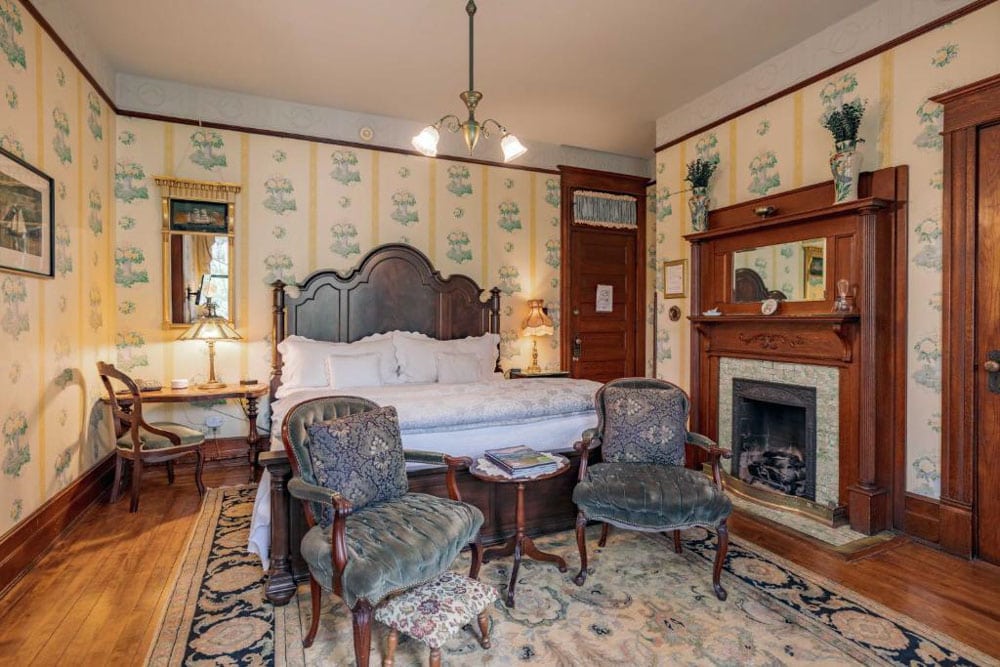
Some of the American Queen Anne architecture features are asymmetrical facades, wall textures, bay windows, wooden roofs, massive chimneys, and round, square, or polygonal towers. Plus, there are adorable fenced gardens.
The famous Beaufort House Inn (formerly the Beaufort Lodge) is another Queen Anne Victorian-style house built in 1895 when “Asheville society was shifting from a remote county seat to a more cosmopolitan center of culture.
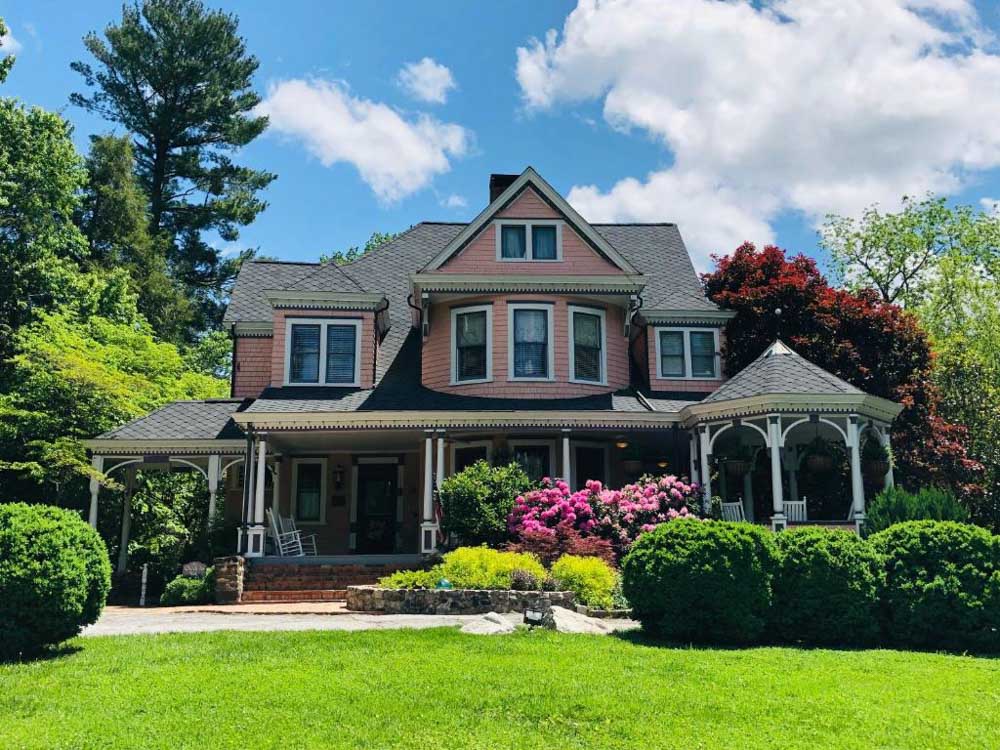
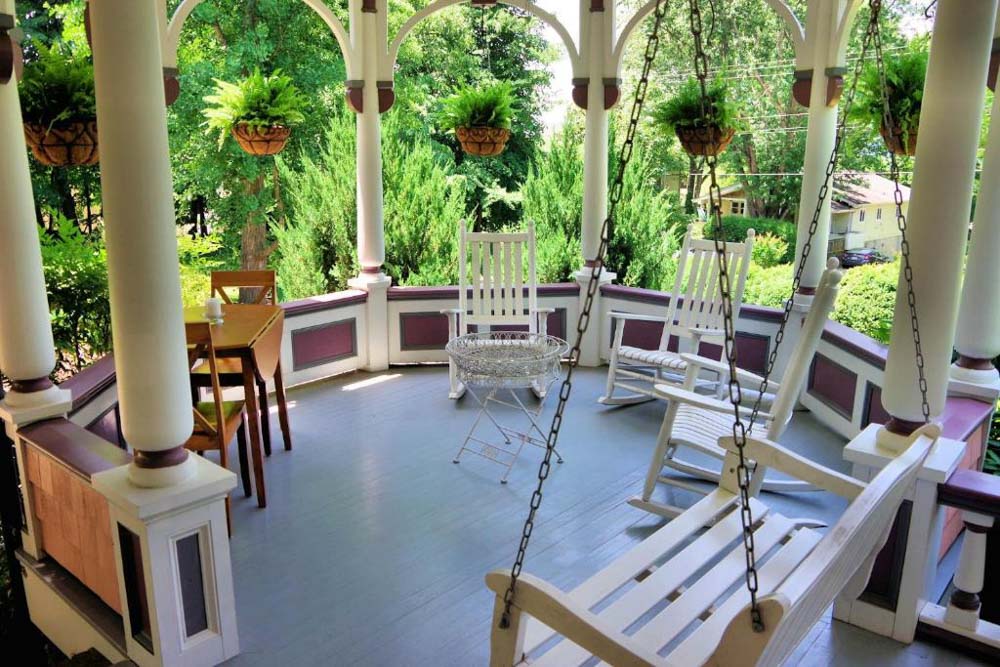
This change was inspired by the vision of George Washington Vanderbilt, who was building what is now the elegant Biltmore Estate.” This quote from their website so accurately describes the beginning of an era.
The lovely Albemarle Inn in the Grove Park neighborhood and the pink Cedar Crest Inn near the Biltmore Estate are two other beautiful options to stay and learn more about historic Asheville.
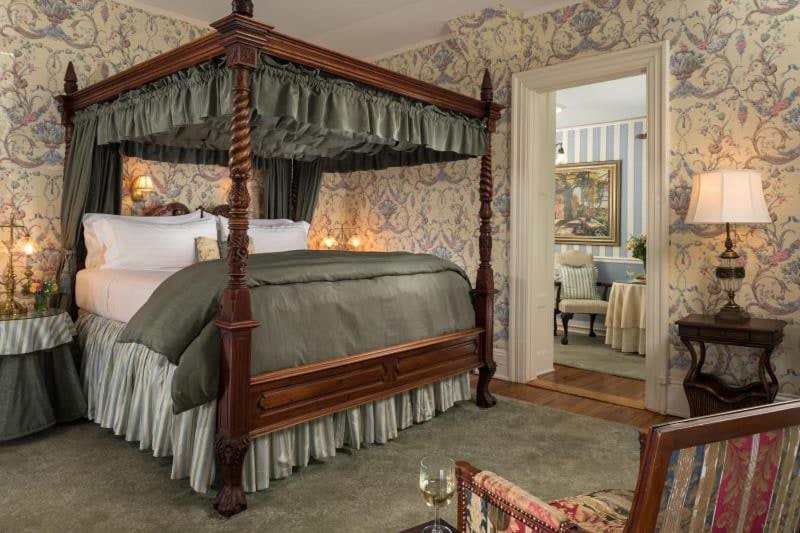
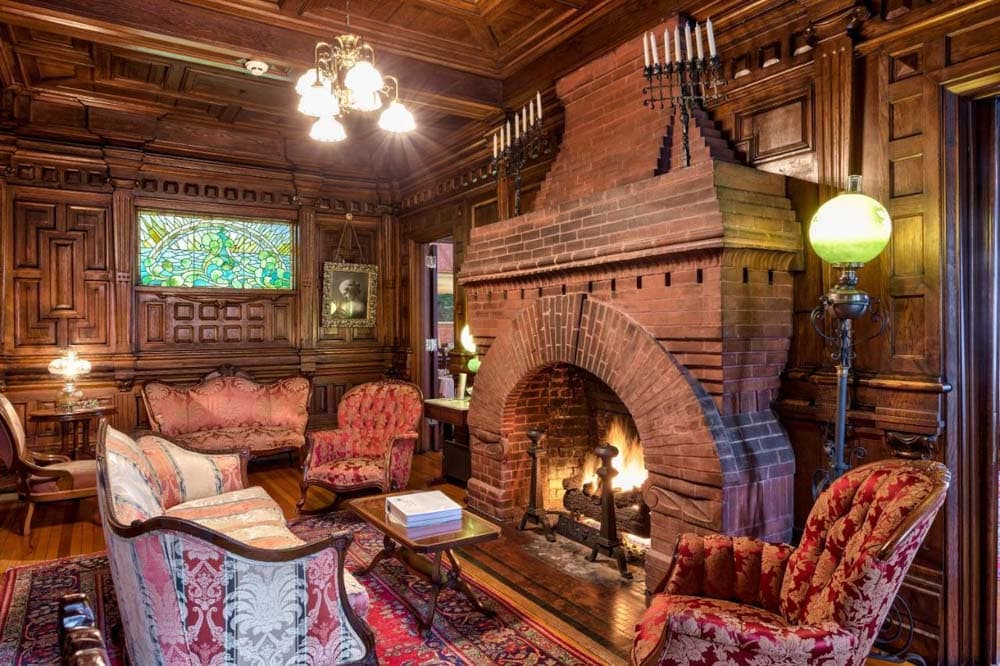
10. Explore Another Aspect of Asheville’s Rich History in the River Arts District
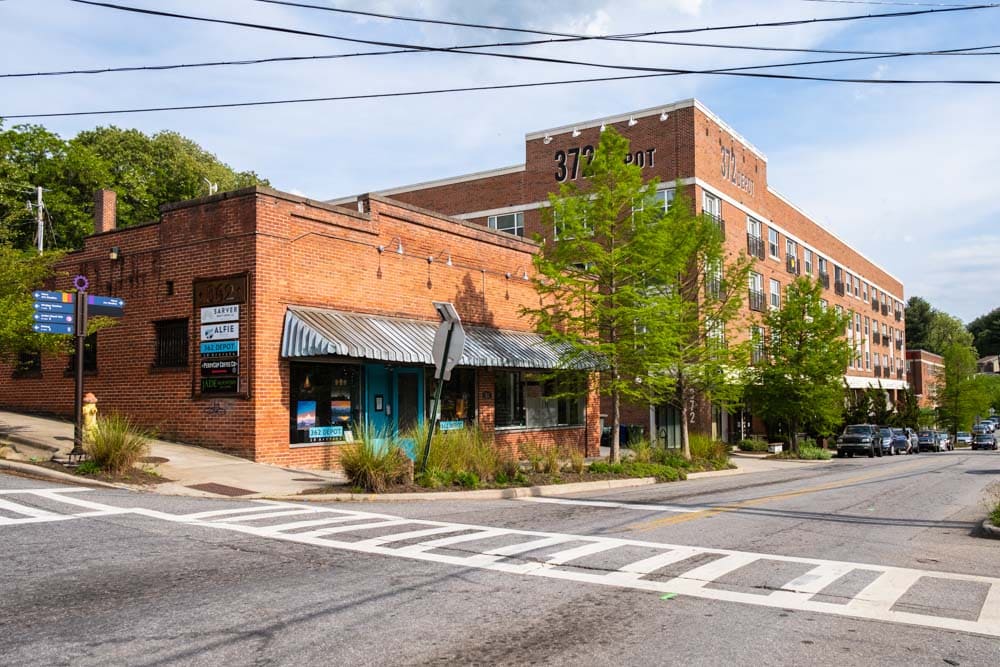
The River Arts District (aka RAD) by the French Broad River is a former industrial area that slowly became one of the coolest parts of town after being abandoned and run-down for decades. There are over 200 art studios and shops in 23 buildings and many wonderful restaurants, coffee shops, and breweries.
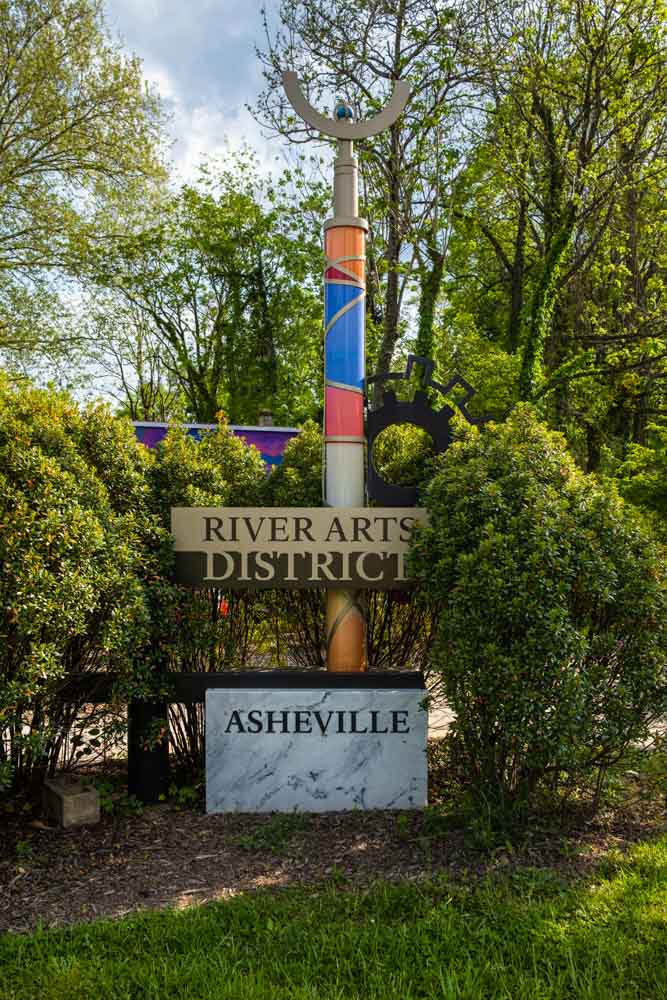
The Asheville Cotton Mill Studios was built in 1887 and is one of the oldest buildings in Asheville. The Cotton Mill had 300 people employed, and it was a successful denim and flannel production center. It now hosts eight Asheville River Arts District studios, and the Guajiro food truck serves the best Cuban comfort food.
Also, the fact that Michelle and Barak Obama have eaten here three times doesn’t automatically make 12 Bones Smokehouse a historic landmark, but you should try its unique food anyway!
11. Visit Grovewood Village, the Former Home of Biltmore Industries
The historic Grovewood Village is adjacent to the Omni Grove Park Inn, one of Asheville’s best hotels and most renowned landmarks. This Asheville art gallery was once home to Biltmore Industries, created by Edith Vanderbilt as a small craft education program that grew into one of the world’s largest producers of handwoven wool.
The one-room Biltmore Industries Homespun Museum is dedicated to the story of Biltmore Industries. Plus, you’ll love the antique looms. The Estes-Winn Antique Car Museum next door has a collection of antique and vintage automobiles and Asheville’s 1922 American LaFrance fire truck (entrance is free!).
This is one of the best Asheville art galleries, representing 350 American artists and craftspeople. It has two art galleries, two museums, and open studios where you can watch the artists at work.
12. Tour Asheville’s Three Most Famous Landmarks
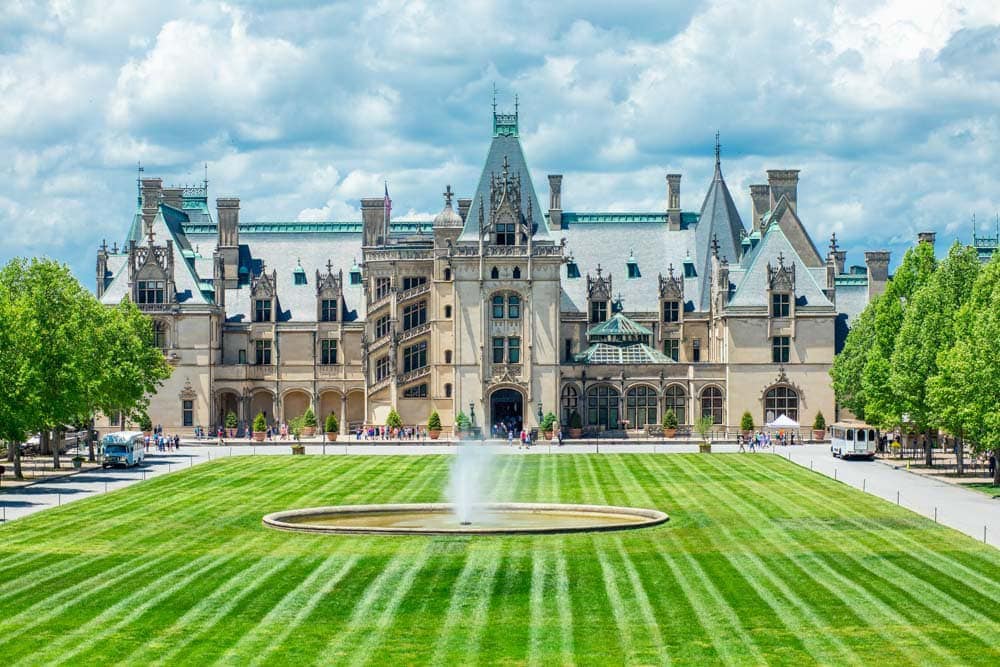
George Vanderbilt’s 8,000-acre Biltmore Estate is a must-visit all year long. There are stunning flowers in the spring, photogenic fall foliage in autumn, and the festive Christmas at Biltmore in the winter.
Some tours are included with your ticket, and others you can take for a fee. If you love to learn about all sides of the story, the Biltmore House Backstairs Tour will give you a glimpse of the lives of the people who worked at the house, taking you to the often overlooked domestic areas.
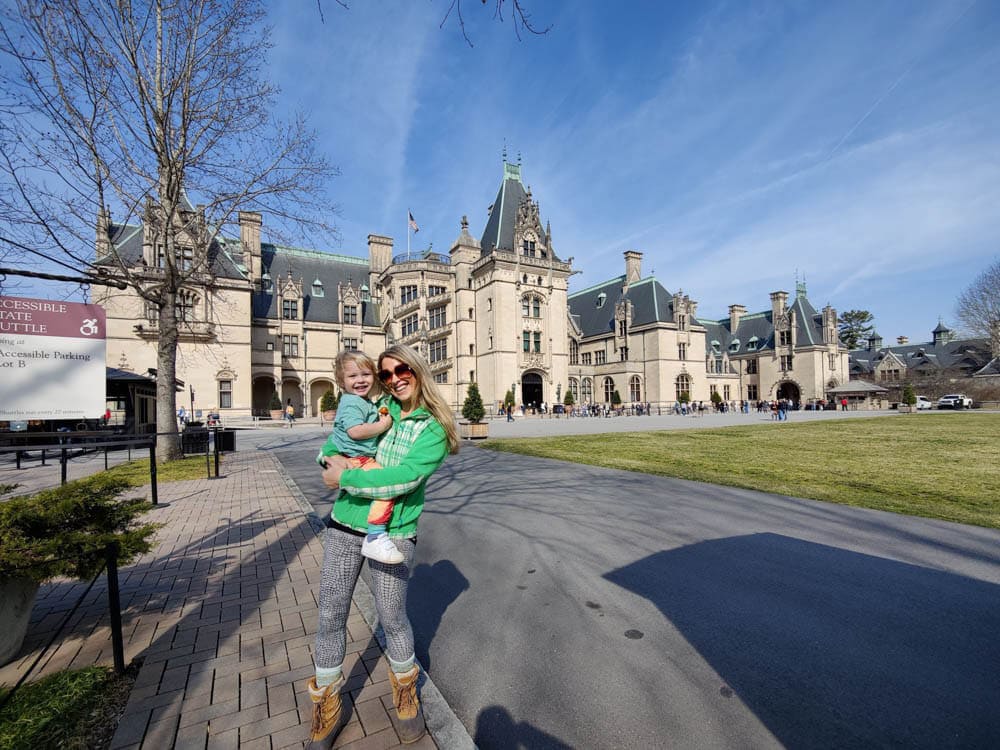
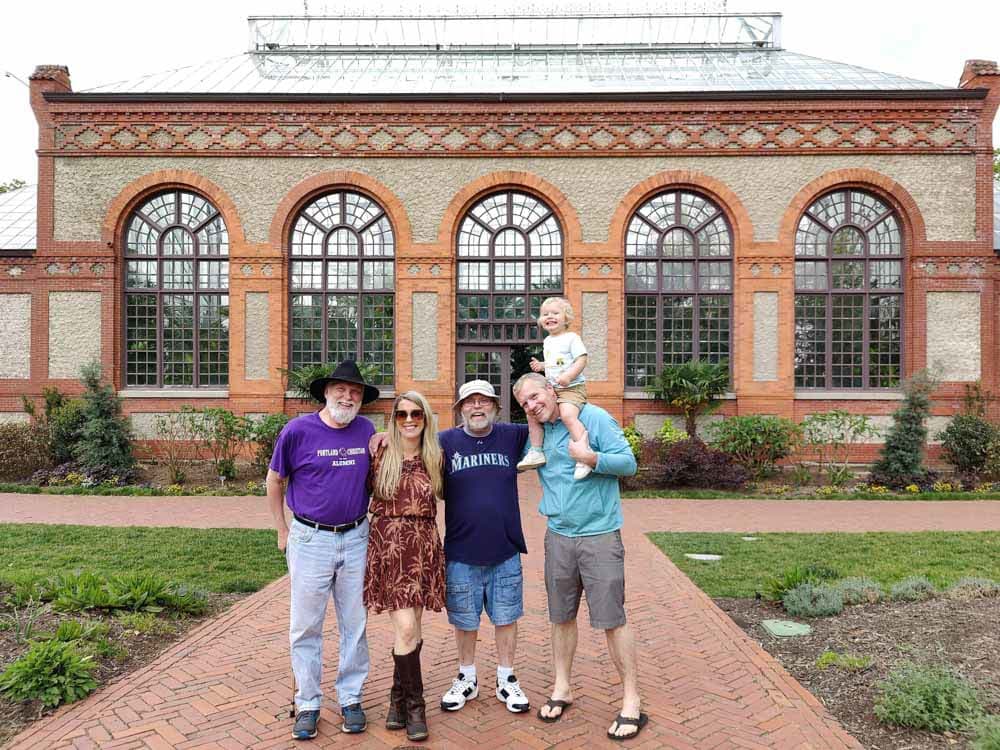
The historic Omni Grove Park Inn is one of the best hotels in Asheville and one of North Carolina’s landmarks. It was founded by Edwin W. Grove, known as “The Father of Modern Asheville.”
They offer a 45-minute self-guided tour covering the hotel’s early years, an Arts & Crafts-style furniture collection, and the visit of famous guests like George Gershwin, Harry Houdini, F. Scott Fitzgerald, and even President Obama.
Finally, the Blue Ridge Parkway is one of the most scenic drives in Asheville, full of historic sites. It follows the ridge of the Blue Ridge Mountains and offers all kinds of experiences and adventures.
There you have it! Twelve must-visit historic Asheville landmarks. Did we leave out any of the top historic landmarks in Asheville? Let us know so we can add them to the list.
SHARE THIS ON PINTEREST


